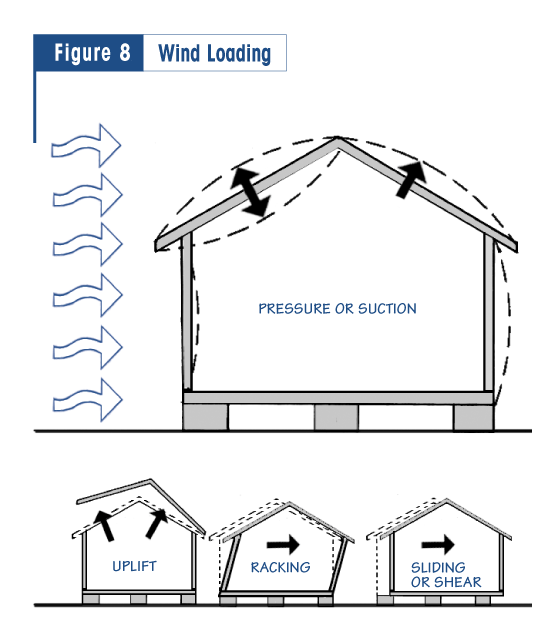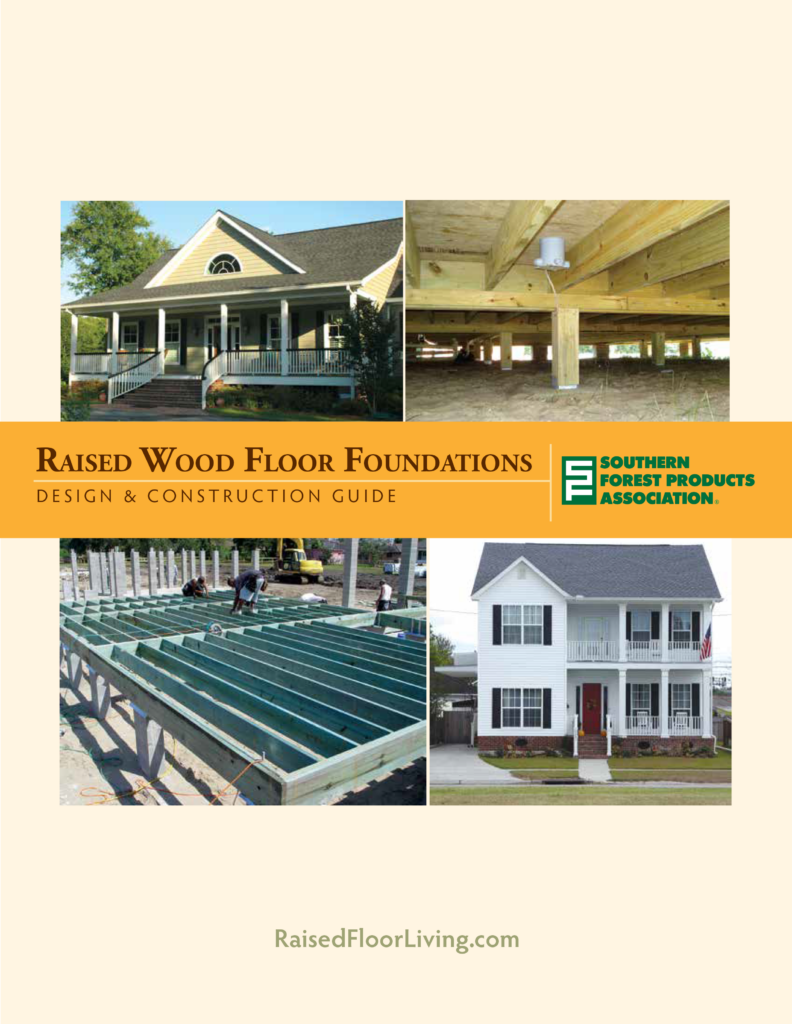Foundation Preparation
Raised Wood Floor
Foundation Preparation
Raised wood floor foundations may be constructed in any soil type. In fact, they perform well even in problematic soils, even in expansive ones that often crack conventional slabs.
To ensure durability and trouble-free performance, a raised wood floor foundation system must be capable of accommodating and transmitting design loads to the soil without excessive settlement. All elements of a raised wood floor system must also be properly sized and assembled to support the design loads.
Footings should be supported on undisturbed natural soils or engineered fill, and foundation systems supported on fills should be designed, installed, and tested in accordance with accepted engineering practices.
A few factors to consider in preparing for your raised wood floor foundation include:
Design Load for foundation preparation
A continuous load path must be provided to transfer lateral and vertical loads from the roof, walls, and floor system to the foundation. A load path can be thought of as a “chain” running through the building. Because all applied loads must be transferred to the ground, the load path chain must connect to the foundation.
To be effective, each link in the chain must be strong enough to transfer load without breaking. Suitable uplift, lateral, and shear connections are also required to complete the load path.
A strong continuous load path is especially important in areas subject to high winds and/or seismic forces. The American Wood Council’s Wood Frame Construction Manual for One- and Two-Family Dwellings provides engineered and prescriptive design requirements for wood-frame construction in areas subject to 110-195 mph wind speeds and seismic design categories A-D.
Soil Conditions
- Grain size distribution
- Liquid and plastic limits
- Organic contents
- Drainage characteristics
- Frost heave potential
- Swell potential
There are several types of classification systems: for example, the Unified Soil Classification System, the AASHTO Soil Classification System, and the U.S. Department of Agriculture (USDA) Classification System. The USDA publishes soil maps that cover most counties and parishes within the U.S. to provide a general guide on the type of soils found in any given region.
Soil properties can vary significantly from one site to another, and even within a single site. Ground materials can also vary from rocks to loose sand and saturated clays.
It may be necessary to consult a geotechnical engineer when any unusual or unknown soil conditions are encountered.
Considerations for Problematic Soils
In poorly drained soils, an open pier-and-beam foundation system is the best way to provide adequate ventilation for raised wood floor systems. This recommendation is especially applicable for sites with a high water table or where extreme amounts of rain often fall in short periods of time.
Special design considerations may be necessary for foundation preparation where clay soils are predominant to avoid excessive expansion and shrinkage, which can adversely affect foundation and structure performance. Furthermore, piles or grade beam footings may be required for soil types with minimal bearing capacities.
Perform a settlement analysis when a raised floor system is built on soils that are highly compressible, as these soils have the potential to settle at more than admissible values. Also, highly compressible and swelling soils should not be used as fill unless they are stabilized within each active zone by chemical, preloading, dewatering, or pre-saturation processes.
Take note: An approved laboratory or geotechnical engineer using standardized methods should determine whether soil tests are needed to better determine their engineering behavior. Tests may range from classification and index to consolidation and triaxial.
Slope Stability
Soil slope stability is an important design consideration in foundation preparation, but it can be difficult to predict. A history of slope failures at or near the site can indicate a problem, and further investigation and design considerations may be needed.
A geotechnical engineer can predict whether slope failures are likely to occur at a particular site based on the slope angle, the characteristic drainage and seepage of the site, the shear strength properties of the soils (friction angle or undrained shear strength), and the external loads.
Clearing and Excavation
Site clearing and excavation methods for raised wood floor systems are no different than for any other conventional foundation system.
Compacted backfill should be free of organic materials, including tree stumps, other vegetation or chunks of clay, and should be no more permeable than the surrounding soil.
Raised Floors Can Save Trees
Root-severing slab construction often requires the removal of existing trees close to the structure. However, valuable and energy-saving shade trees can be preserved near a raised wood floor foundation. Only the footings of a raised pier-and-beam structure may penetrate the root system, allowing trees to thrive.
Open pier spacing can be adjusted to avoid major tree roots. Tree roots thrive between piers, while they must be severed by slab and site work.
Check out our Raised Wood Floor Foundations publication, a comprehensive design and construction guide for using Southern Pine for raised wood floor systems.
Click below to learn more about:

